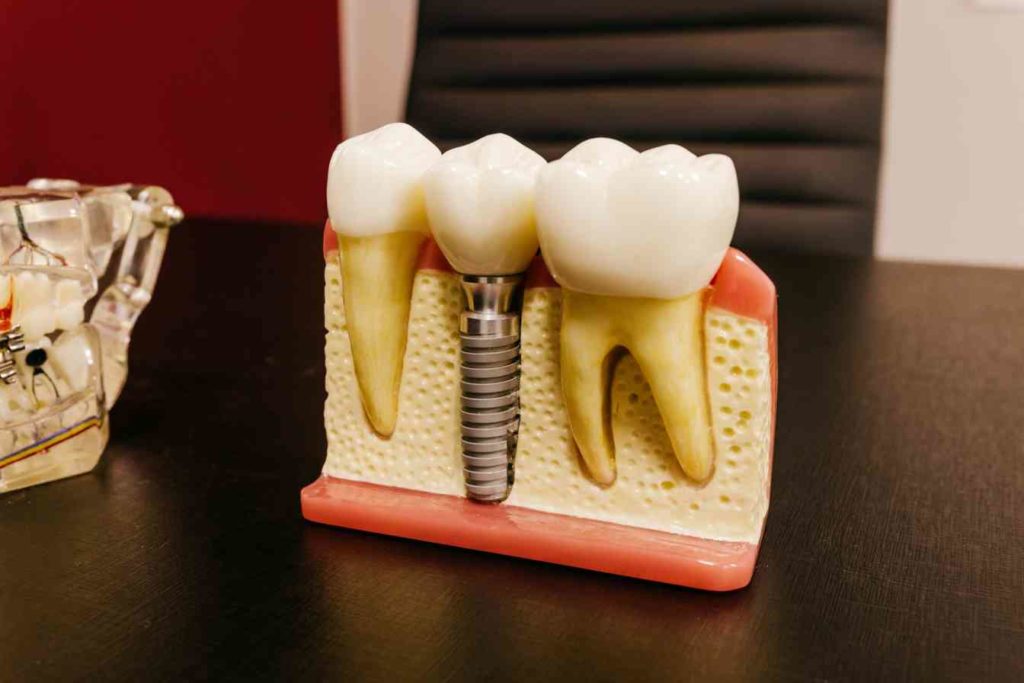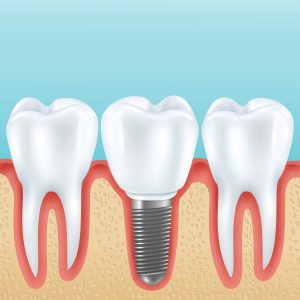Dental implants were invented more than 50 years ago and have continued to rise in popularity as a permanent solution to missing teeth. Choosing dental implants over other forms of tooth replacement like dentures or bridges has numerous advantages but can be a daunting decision to make for a lot of patients. However, knowing details about dental implants can help patients make an informed decision and feel more confident before going ahead with the procedure.
Table of Contents
Types of Dental Implants

Dental implants are made up of biocompatible materials; the most commonly used ones are made from titanium alloy. Newer types of dental implants are being made of ceramics and polymers as well. Still, titanium alloy remains the top choice among dentists and manufacturers even today. Depending on the position of their placement, there are mainly two types:
- Endosteal implants are drilled directly into the jawbone and support one or more artificial teeth. These are the most commonly used types of dental implants and may resemble screws or cylinders in shape.
- Subperiosteal implants lie on top of the jawbone underneath the gum tissue, instead of being drilled into the bone. These types of dental implants are given to patients who do not have adequate bone support for the implant. Subperiosteal implants are not commonly used anymore as they have a much lower success rate compared to endosteal implants
Procedure:
The procedure primarily consists of three steps, which include:
Initial Assessment:
The patient undergoes an oral and general health check-up to determine whether they are an excellent candidate to receive dental implants. The dentist might advise a number of tests like X-rays, CT scans, blood tests, etc. before moving ahead with the procedure.
Surgery:
Dental implant surgery is an outpatient procedure that is done under local anesthesia. Once the patient has been deemed fit to receive implants, the surgical procedure can be scheduled and be completed in a day. The dental implant is drilled into position in the jawbone, and the patient is sent home for a waiting period of about 4-6 months. This is the amount of time required for osseointegration to take place, which consists of the implant fusing into the surrounding bone. This is the most crucial step that determines the success rate of the dental implant.
Fitting of the Dental Crown:
Once successful osseointegration has taken place, the artificial tooth or dental crown can be fitted onto the dental implant. Depending on the preferences of the patient, the artificial tooth may be fixed or removable. However, most people who opt for dental implants choose to have them remain fixed in their mouths.
How Much Does it Cost:

It requires a large amount of investment in terms of both time and money. However, the benefits of dental implants over all other forms of artificial tooth replacement make them worthy of their cost.
The total cost of a dental implant procedure has a lot of variables and can depend on numerous factors like:
- Number of dental implants and dental crowns to be placed
- Position of the placement; whether upper or lower jaw, or both
- Overall general health status
- Whether bone graft surgery is needed to augment the jawbone
Patients are advised to remain wary of dental professionals who make promises of cheap dental implant procedures. They may not be of good quality, and there may even be shortcuts involved with the procedure. While it may seem to present good savings initially, the treatment may not be successful in the long run and could eventually lead to added costs.
Talk to your dental insurance provider for financing options, which can include dental loans and payment plans.
Problems Associated:
Dental implants have a success rate of more than 95%. However, some patients may experience problems with dental implants in specific scenarios:
- Lack of oral hygiene maintenance, which can lead to infections around the dental implant site and cause the failure of the implant
- Post-surgical complications like pain, bruising and bleeding that may be a little worse in some patients, leading to a longer recovery period
- Potential for nerve or tissue damage in procedures performed by inexperienced dental surgeons
Dental implants are one of the safest and permanent ways to replace missing teeth provided they are carried out by well-trained dental professionals who have the required expertise necessary for the procedure.




